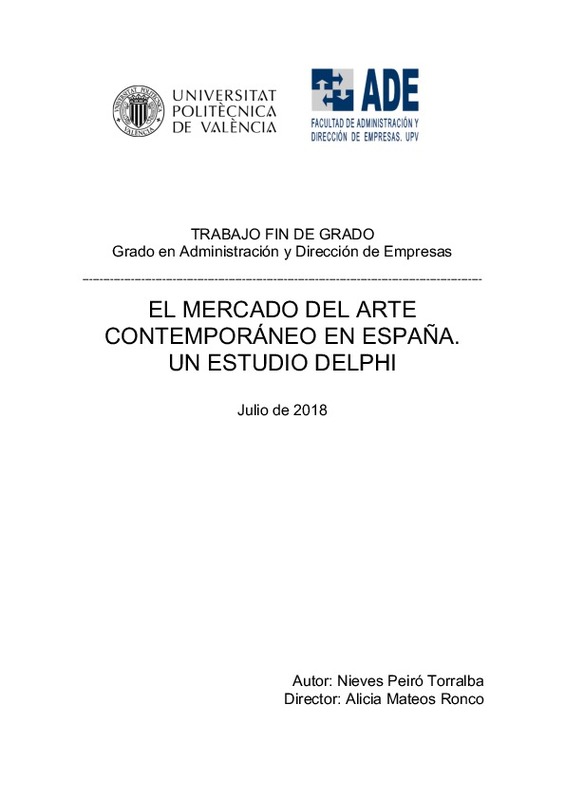|
Resumen:
|
[ES] El mercado del arte se configura, por sus especialidades, como un sector de actividad económica de características excepcionales. Su actividad productiva es intensiva en conocimiento y sus elementos constituyentes ...[+]
[ES] El mercado del arte se configura, por sus especialidades, como un sector de actividad económica de características excepcionales. Su actividad productiva es intensiva en conocimiento y sus elementos constituyentes (oferta, demanda, canales, fijación de precios, partícipes, etc.) lo identifican como un sector complejo y de difícil análisis. Sin embargo, existen razones de peso que justifican la necesidad de potenciar y profundizar en el análisis del mismo, no sólo por ser uno de los motores esenciales del desarrollo económico en economías avanzadas, sino por su contribución creciente al PIB en España. Por estos motivos, en este TFG se realiza un análisis de los diferentes canales del mercado del arte contemporáneo en España, incidiendo en los comportamientos que difieren de los propios de un mercado económico habitual. Este análisis abarca distintos aspectos, como los artistas, que no están respaldados por ningún tipo de regulación ni pertenecen a ningún colegio profesional como ocurre en otras profesiones, hasta las galerías de arte, cuya gestión y funcionamiento presenta características muy diferenciales en relación a otros tipos de empresas. Además, tampoco hay que olvidar el hecho de que la percepción de valor de las obras de arte, así como su depreciación y rentabilidad, se comporta de forma completamente dispar a la convencional. El objeto de este mercado tiene notables connotaciones estéticas y psicológicas, pero también, y cada vez en mayor medida, se le atribuye naturaleza de bien de inversión. A todo esto se le debe añadir la falta de recursos y estudios relacionados con el mercado del arte en términos económicos, ya que la mayoría de ellos se centran más en la parte filosófica, social e incluso psicológica del arte. Se realiza un estudio Delphi, consultando a diversos expertos del sector con el fin de identificar las fortalezas y debilidades de este mercado en España, así como extraer conclusiones sobre los motivos que han configurado su situación actual y posibles actuaciones a llevar a cabo.
[-]
[EN] It is a known fact that the contemporary art market is one of the less regulated ones. There is a lack of standardized information about it from an economical point of view.
During the development of this final ...[+]
[EN] It is a known fact that the contemporary art market is one of the less regulated ones. There is a lack of standardized information about it from an economical point of view.
During the development of this final project, the different economic agents of the contemporary art market will be analyzed, putting particular emphasis on the market tendencies which differ from those of a common one; from the artists, who are not supported by any kind of regulation and do not belong to any professional association, to art galleries, whose management and inner workings have little to do with those of a traditional commercial company.
Also, the fact that both the value perceived, its depreciation and its profitability behave in a completely unconventional manner must be recalled.
Moreover, an in-depth study of the Spanish art galleries will be conducted, dissecting their inner workings and carrying out an economic-financial analysis about them, with the aim of obtaining a more accurate vision about the problems that affect this economic sector. These problems may also affect the art market in general, as the art galleries play a decisive role in this market.
Finally, a Delphi study will be carried out, consulting a group of experts, for the purpose of drawing conclusions about strengths and weaknesses of the market, besides determining the causes of its current situation.
In conclusion, to do a project like this will contribute to the object of study because new information and possible solutions will be provided, trying to enhance the existing data about the art market.
[-]
|







